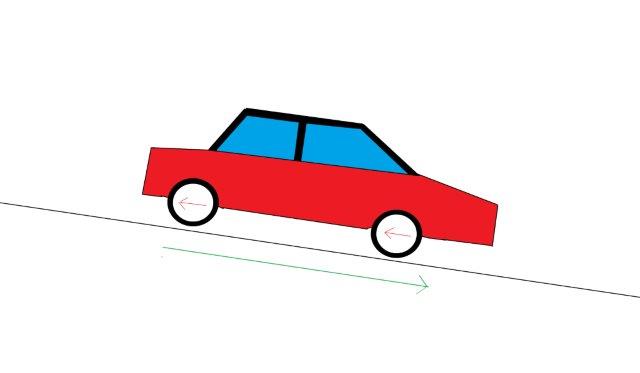Hill Descent Control (HDC) was originally developed by Bosch for Land Rover who used it on their Freelander model. It was designed to allow the vehicle descend on a downward incline in a smooth and controlled manner. When HDC is enabled the vehicle will use it's ABS braking system to hold the vehicle below a specified speed. In some cases, such as Volvo's system, HDC will operate in conjunction with the vehicle's engine torque as well as the brakes to slow each wheel's speed individually to maintain the maximum amount of traction. If the vehicle accelerates beyond the speed that the HDC system is set to without the driver applying input to the throttle, the vehicle will use the braking system to slow the vehicle to the desired speed. If torque is applied to the brake pedal, the HDC system will be overridden until HDC is re-engaged in much the same way that automatic cruise control works in many modern vehicles.

To activate the Hill Descent Control system an HDC button is normally located on the center console or steering wheel. Most vehicles require that the vehicle is traveling under a specified speed determined by the manufacturer, usually around 30 mph. When the system is engaged it will slow the vehicle to around 7-10 mph depending on the vehicle's manufacturer. After engaging the system the vehicle's speed can be adjusted either by actuating the throttle or by using the cruise control settings located on the steering wheel. The system can be deactivated either by accelerating the vehicle beyond a predetermined speed, usually 50 mph, or by pressing the HDC button again.
Hill Descent Control is available on BMW models equipped with four-wheel drive. On these models HDC can be activated if the vehicle is traveling at a speed of 35 km/h or less. When HDC is enabled it will slow the speed to about 7 km/h. The vehicle automatically actuates the brake lights to warn drivers situated behind. The accelerator can be applied to vary the speed of the vehicle between 7 km/h and 25 km/h. If the speed of the vehicle is accelerated beyond 25 km/h, the HDC system will go into standby mode. If the vehicle is accelerated beyond 60 km/h, the HDC system is turned off completely. When HDC is deactivated, it gradually reduces the applied braking force to allow the driver to gain full control over the vehicle's speed.
More advanced HDC systems aim to go beyond simply maintaining desired speed while descending an incline. Advancements in the technology also take into account and try to maintain the driver's intended path. To do this the system takes into account the vehicle's yaw rate and steering wheel position. The yaw rate is compared to the position sensor to determine which direction the vehicle is turning versus the direction the driver is indicating the vehicle should be turning. The system then brakes individual wheels and adjusts torque to the wheels to maintain the desired direction.
HDC is available in a number of vehicles from manufacturers including Ford, Chevrolet, Jeep, Land Rover, BMW, Audi, and Volvo. Vehicles equipped with HDC are usually designed to go off road and while some come with HDC standard (for example, all of BMW's four-wheel drive vehicles come with HDC) others are optional upgrades available for an extra fee.

